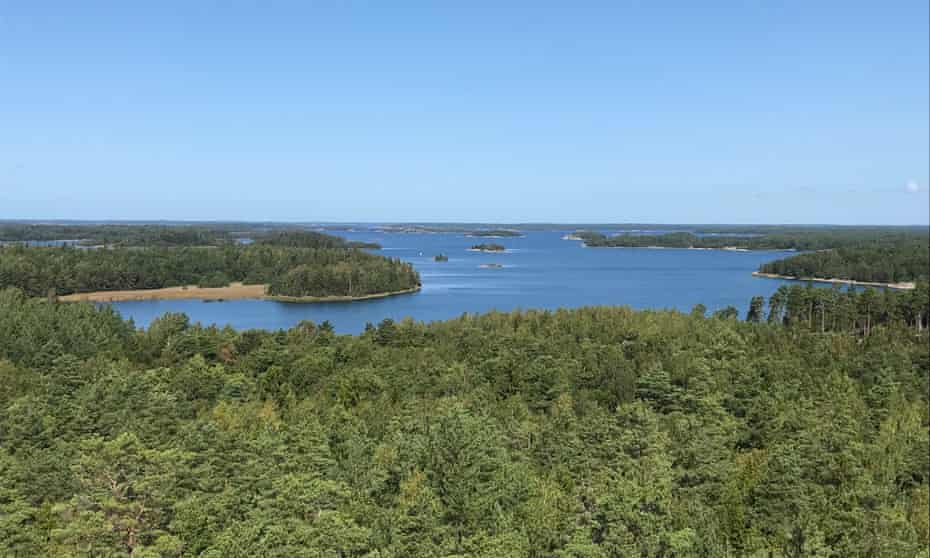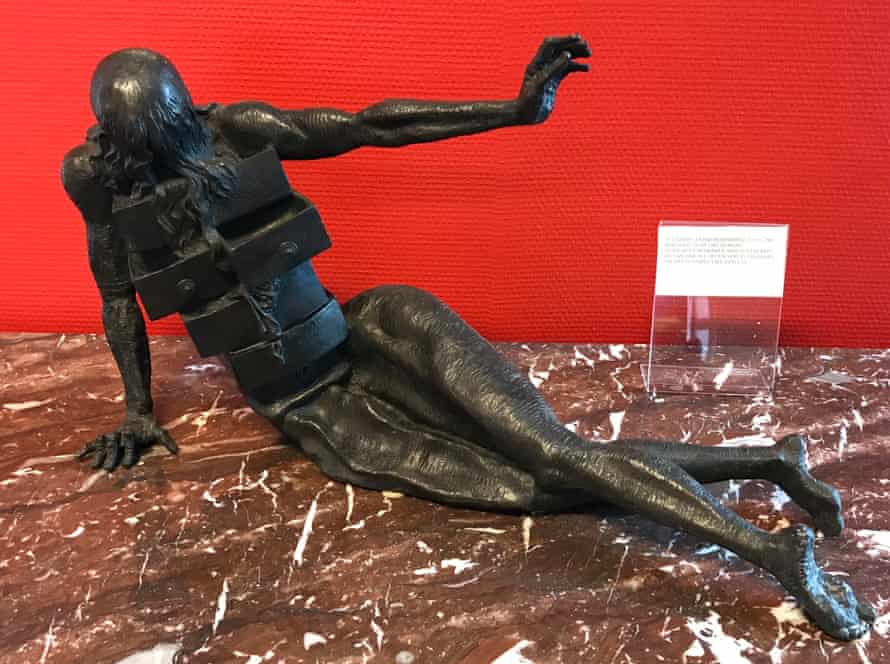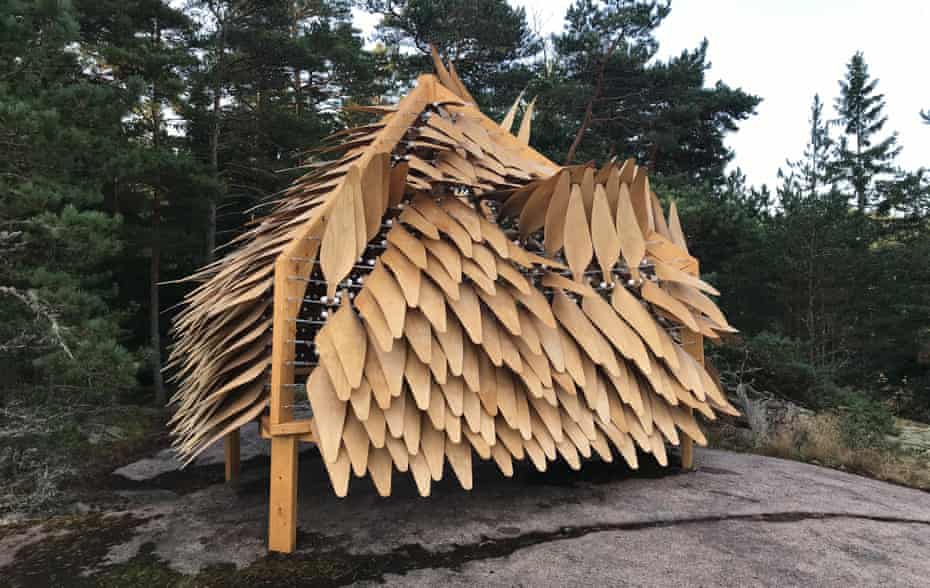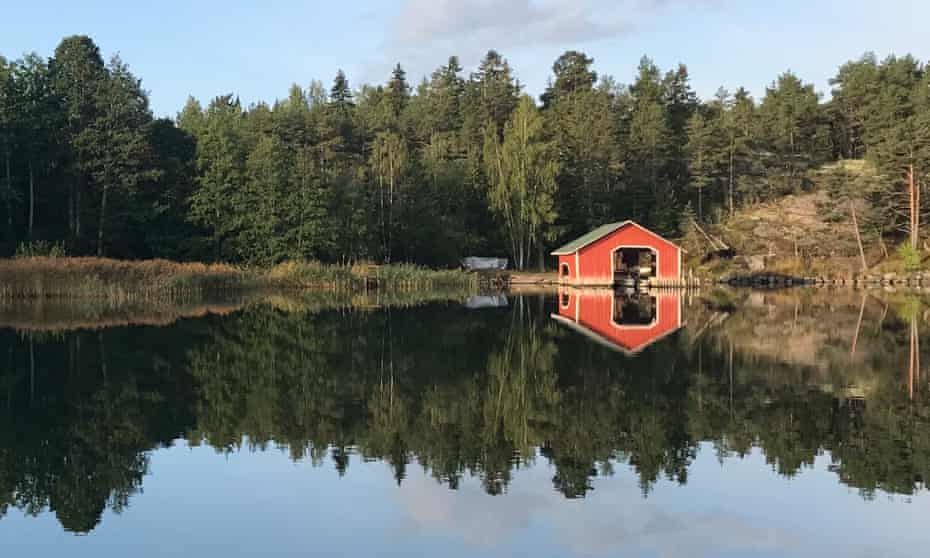Finland has dealt with the pandemic much better than a lot of other countries. It still has one of the lowest rates of both confirmed cases (about 103,851 at time of writing) and coronavirus-related deaths (currently 982) in Europe, a feat many have attributed to a strategy of rapid lockdowns and stringent travel restrictions.
It did all this in typical Finnish style: without shouting about it. Perhaps this quiet demeanour is related to the country’s deep connection with the natural world, where shouting usually isn’t necessary. More than 90% of Finland is either forest or water, and the country’s jokamiehenoikeus (right to roam) gives anyone living in or visiting Finland access to all that nature, including a lot of privately owned land.
It all makes for a place where it is very easy to escape people and everyday pressures, as I found on a visit in 2019.
Days into my trip I found myself cycling along a deserted road on a clunky old bike borrowed from my guesthouse, and the only living creatures I saw were a family of geese waddling through a field towards a thick pine forest. If I hadn’t been sitting in a beach-side sauna 45 minutes beforehand, sweating noticeably more than the other two bathers, I’d have sworn I had the island of Iniö all to myself.

This was to become a familiar feeling during my trip around the Turku archipelago – about 20,000 islands off Finland’s south-west coast. Visiting all 20,000 seeming a little ambitious, I opted to roughly follow the 200km Archipelago Trail, a loop of road and ferry routes that begins and ends in Turku, Finland’s oldest city and its former capital.
Turku mixes historic monuments and modern comforts well, and while there’s not really a singular, show-stopping sight, there’s plenty of mileage to be had from simply hopping between galleries and lively cafe-bars (many lining the River Aura), and delving into a rich restaurant scene. Favourites included Kuori, for creative and pretty vegetarian and vegan fare, and Tintå, a buzzy bistro on the Aura that does gourmet pizzas with unusual toppings (asparagus, strawberry and vegan feta was an unlikely winner).
I began the trail by driving south towards Pargas, 25km away. This small town’s headline attraction is Art Bank, which claims to be Scandinavia’s only viewable private Salvador Dalí collection, though Dalí’s surrealism seems pedestrian compared with eccentric owner Ted Wallin, who showed me around. “I fall into a trance where I know that I am Salvador,” he said, casually. “Outside in Pargas, everyday life does not have much glamour, so people come to Art Bank for excitement.”

I got my excitement by driving on to the tiny town of Nagu, in a landscape of flat, luscious green fields and pine forests punctuated by red wooden houses.
My base was the Lanterna Hotel (doubles from €100 B&B), close to the harbour, where restaurants include Najaden, a bar and pizzeria on an anchored steamboat. I checked out a red, wooden bell tower tucked away in a forest before hurrying back to the harbour for a ferry to Seili, a tiny island off the main trail with a chilling history.
Seili has a lot for nature-lovers: it’s home to various rare and unusual plants and I glimpsed wild hares, huge dragonflies and even what I thought was a wild mink. But it hides a more macabre past. In the 17th century Seili housed a large leprosy hospital, to which hundreds of people were shipped on a one-way journey. The hospital was later converted into a mental hospital for women. Although today the hospital is the Archipelago Research Institute, studying environment and wildlife around the Baltic, visitors can still wander the old buildings and cell-like rooms, some of which have been preserved to show the hospital’s history.
The next morning in Lanterna’s antique-filled dining room, I breakfasted on rye bread with peanut and tamarind sauce, plus a lot of cucumber – a Finnish staple. Afterwards I headed to the harbour for the (free) five-hour ferry journey to Utö, Finland’s most southerly inhabited island, with a population of about 45.

Viewing Utö on Google Maps gives a dizzying sense of its isolation – and it’s exactly this remoteness that appeals. There’s a hotel in former army barracks (the island is still used by the Finnish military), but I stayed at Hanna’s Horizon B&B (doubles with homemade breakfast from €77). Owner Hanna Kovanen is a fount of knowledge about Utö, having been born here, and also runs tours of the red-and-white lighthouse (Finland’s oldest functioning example), which has a chapel on its third floor.
After the tour I clambered out to some rocks on the island’s southern coast. Maybe it was the romantic filter my brain had devised for Utö, or maybe it was the (admittedly quite strong) Finnish IPA I’d taken with me, but as I stared out towards a lot of glorious nothingness, I realised I’d never been more detached from the rest of the world. It felt fantastic.
My next island stop was Korpo, home to the rural Hotel Nestor (doubles from €130 B&B), plus a lake and a sculpture walk in the forests.

Iniö, four ferries and four hours away to the north, was my final stop. Its tiny main village has a pretty church, cafe and small harbour with sauna and beach, where I forced myself into the cold water. I warmed up in the sauna (traditionally, you’re meant to sauna first, then dip into cold water), where I made the British mistake of wearing swimming trunks. After derisive glances from the other users, I left, shed the shorts and returned, acting as if nothing had happened.
Heading back to Turku, I stopped at several towns on the final section of the trail, now connected to the mainland, including Taivassalo and Naantali. Naantali’s tourist-heavy harbour was a fine place to stroll, but nowhere has the gentle magic of the smaller islands – or their wildlife. I’d regularly seen bounding deer and stags, countless fluorescent caterpillars and colourful insects, plus more rare birds than my basic ornithologycould name.





